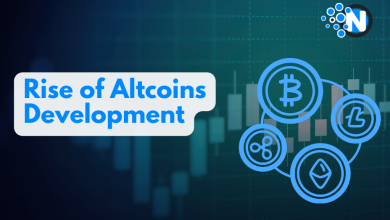India And SE Asia As Blockchain Leaders In 2025

The blockchain space has seen an incredible 2024. On the crypto end, we saw Bitcoin and Ether get spot ETFs, milestones the industry had been chasing for years. Major tokens also saw incredible bull runs, with Bitcoin even passing the coveted $100,000 mark. Then there was the growing adoption of blockchain adoption around the world and greater intersection with other technologies like AI.
As 2025 rolls around, blockchain is poised to do even better, though the countries at the forefront of this progress might surprise you. As per current studies, India and South East Asia will be the next industry leaders.
Blockchain Revolution – A Global Perspective
The blockchain revolution is reshaping the global landscape of finance with the introduction of decentralized technologies. This innovation is extending towards the multiple aspects of the industries like their finances, supply chain management, healthcare, and more.
The transparent, immutable, and secure blockchain transaction abilities are changing the way we exchange money, store data, and establish trust. A decentralized framework is offered to reduce the need for intermediaries, potentially lowering costs and increasing efficiency.
On a global scale, blockchain encourages greater inclusivity by providing financial services to unbanked populations to streamline cross-border transactions. As adoption grows, the blockchain revolution promises to redefine traditional systems and pave the way for a more interconnected, transparent, and equitable world.
Why India and SE Asia Are Poised for Blockchain Leadership?
India and Southeast Asia are well-positioned to lead the blockchain revolution due to several key factors.
Firstly, both regions have a young, tech-savvy population. In India, over 50% of the population is under 25, and the widespread use of smartphones and internet connectivity fuels digital engagement. Similarly, Southeast Asia claims a high rate of internet and smartphone usage. Hence, it is creating a way of a fertile ground for blockchain adoption.
Secondly, robust digital infrastructure plays a crucial role. India’s Unified Payments Interface (UPI) and the broader India Stack framework provide a solid foundation for seamless digital transactions. Southeast Asia also has a growing fintech ecosystem, with governments actively supporting blockchain innovations.
Thirdly, both regions have a thriving startup ecosystem. India is home to numerous Web3 startups, while Southeast Asia has seen significant investments in blockchain projects. This entrepreneurial spirit drives technological advancements and economic growth.
Lastly, supportive government policies and a growing pool of skilled developers further enhance their potential. Governments in both regions are recognizing the importance of blockchain technology and are implementing favorable regulations to develop innovation.
These factors combined make India and Southeast Asia prime candidates for blockchain leadership. Further, these are also promising a future of increased transparency, efficiency, and inclusivity.
How India and South East Asia Are Driving Blockchain?
According to the Chainalysis 2024 Crypto Adoption Index, India was ranked number one. It is worth noting that the country was ranked number 1 last year and was number 4 back in 2022. This suggests a significant shift from 2022, as well as India’s dominance about crypto use enduring. Another shift in these reports was for Indonesia, which went from 7th place in 2023 to 3rd in 2024.

While some other Southeast Asian countries saw minor dips, such as the Philippines going from the 6th to the 8th, the region was well-represented. For example, Vietnam slipped in the rankings from 3rd to 5th but this was credited to more competition from other countries in the region and not necessarily a decline in local crypto interest.
The growth for both India and Indonesia was credited to the rise in centralized crypto service usage. Amazingly, decentralized crypto transactions went down in India during the same period but went up in other places like Nigeria.
Another trend noted in places like Malaysia and the Philippines was the greater use of cryptocurrency for things like gaming. Industry watchers will note that crypto is being used more within the gambling space.
Because it offers privacy, control, and the potential for more profit, many consumers are turning to it alongside or instead of fiat currency. In Malaysia, online casino sites see millions in transaction volume every day. This has created a landscape where crypto demand is kept consistent and has certainly contributed to the adoption rates within those countries.
What 2025 Might Bring?
Many experts on blockchain have predicted that 2025 will see even more blockchain development in India and Southeast Asia and this is down to several factors. First, the region has a large, young population that is tech-froward and this means that interest in blockchain and other novel technology can be sustained.
Then, there is the regulatory landscape which is evolving to further include blockchain. Countries like Thailand are renowned for their pro-blockchian laws and this creates space for the industry to flourish. Then you have remittances, with Asia as a whole having some of the highest rates, which creates demands for tokens like XRP.
On the backend, industry leaders have called for more collaboration between blockchain and other technologies. AI has especially been under the spotlight as it is used in every facet of life imaginable.

Given that Asian countries like India and Singapore have a record number of data centres (which are crucial in powering the AI economy), increased collaboration between AI and blockchain will only lead to more adoption of both.
Countries like Singapore, Indonesia, and Thailand have become blockchain hubs with proactive regulations and business-friendly environments. This will be especially true in 2025 as AI growth is expected to increase even more.
Conclusion
If we thought 2024 was a good year for blockchain, 2025 is on track to be even bigger. But even with all this growth, India and SE Asia are looking to be the biggest winners. Due to a combination of a healthy population, tech innovation, use cases that appeal to the locals, and much more, blockchain is seemingly breaking more ground there than anywhere else. If this progress can be maintained in 2025, the region could become the biggest global force in blockchain and tech as a whole.




